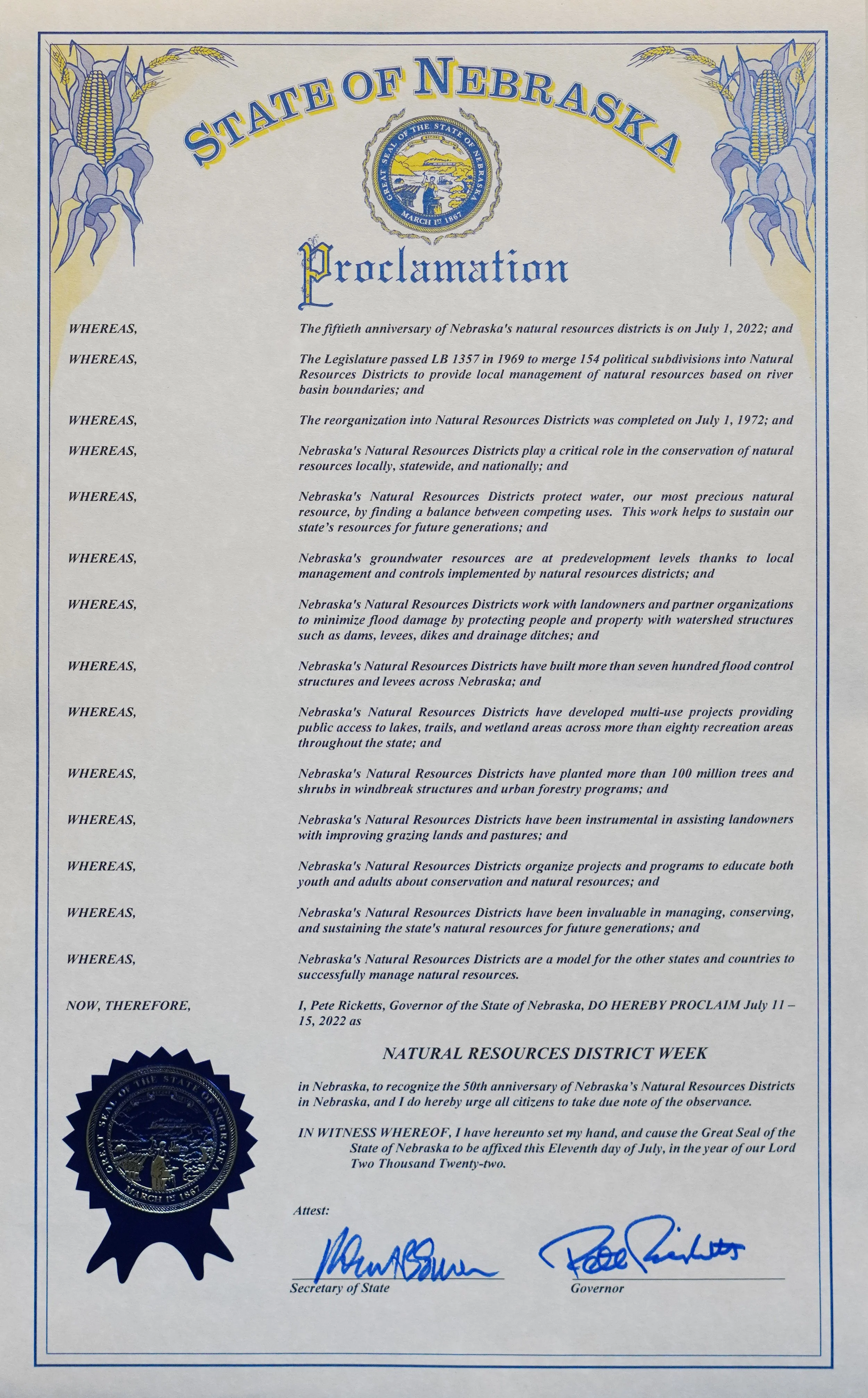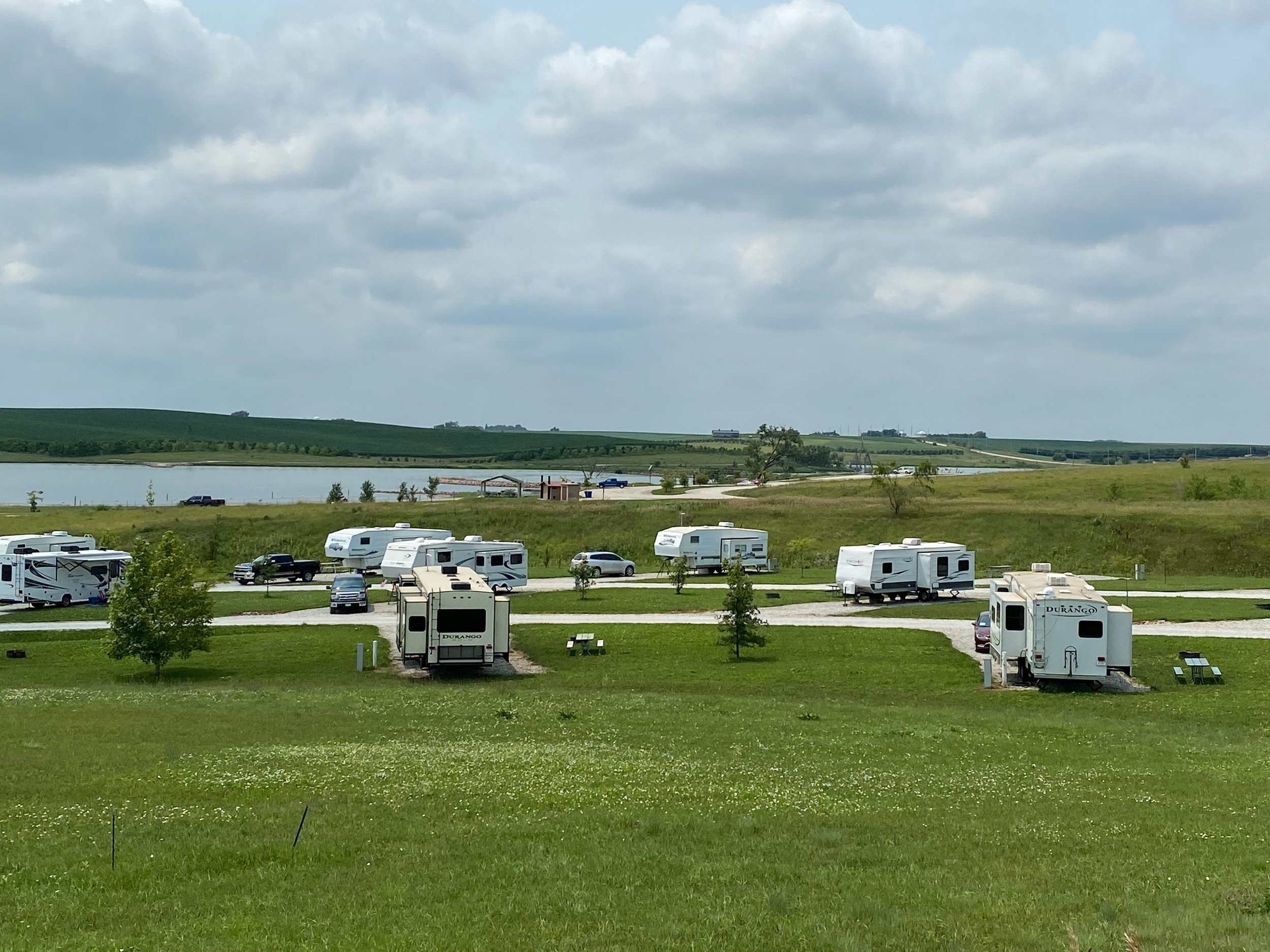Farming is a gamble - risks are taken, markets fluctuate, storms and droughts occur. Some things are just out of our control. But what producers do have control over, are the decisions they make about the conservation and protection of our groundwater resource.
Crystal Powers, Research and Extension Communication Specialist, with the University of Nebraska Water Center, was the guest speaker at the May committee meeting of the Lower Elkhorn Natural Resources District (LENRD) Board of Directors. Powers began with, “How many of you play pitch? We’re currently teaching our boys, ages 8 and 10, to play the game. The hardest part for a new player is learning how to use the cards they’ve been dealt. They understand the points, but it’s figuring out when to hold them or fold them that makes the difference in the game. You might have an ace, but if you can’t protect your 3…big impact, but you may not end up winning the hand. As we think about the game of pitch, we can relate it at the field level and begin to understand the complex strategy needed to improve outcomes.”
It’s often been said that we’re doing the best we can to protect our natural resources, but are we? Powers continued, “Some would argue that with the current farming practices and management styles, we’ve got it all under control, the problems we have with nitrate in our groundwater stem from old farming practices from years ago. But, as we dive into the topic of irrigation management, we find this is often not the case.”
One of the ways we can study the impact that farming practices have on the land and water is by doing vadose zone sampling – from the surface all the way through the root zone to the groundwater.
A vadose zone study in the Hastings area, completed by UNL, has shown a 30% increase in nitrate leaching over a 5-year period from 2011-2016.
Excess irrigation can potentially cause further nitrate leaching. The goal with in-season irrigation is to only apply what the crop needs. The penalty is 5-8 lbs. on N loss per inch of root zone drainage. This level can go up or down according to soil, available nitrate, and water use. Soil moisture sensors can help producers know exactly what the plant needs and how much to apply when.
A study in the Upper Big Blue NRD showed that 56% of fields received excess irrigation from 2017-2020. This was determined by using soil moisture sensors. Powers said, “You can go down 3-4 feet and if there’s moisture in the root zone, you do not need to water. When looking at the potential for over-watering, sometimes it’s early in the season, sometimes it’s throughout the growing season, sometimes it’s late. So, we have things we can do. This is good news. We’re all about continuous improvement.”
How can we tackle this problem? Start at field level, one field at a time. Ask yourself, how is the land used, and what is the crop management system? The risk is the vulnerability of the land, combined with what we do with it and how we do it. Powers listed deficit scheduling, water meters, soil moisture sensors, and weather data, water management tools to prevent further nitrate leaching.
Aquifer vulnerability can also play a huge role in the quality of our groundwater. Groundwater vulnerability can be noticed in Community Wellhead Protection Areas, sandier soils that are harder to manage, the depth to groundwater in a particular location, wetland or ponding areas that push water down in the aquifer. The AEM data, funded by the NRD, helps captures the locations of underground aquifers and understand their vulnerability.
Powers added, “Think of your high cards as your land use. The least amount of risk for nitrate leaching is pasture ground, then turf, then cropland – dryland, pivot, furrow, and then concentrated areas in feed yards. The more you move your land into these intense uses, the higher the risk of loss of nitrogen.”
Off-season soil water storage is also a critical component in the risk for leaching. Powers continued, “Fields often get left wet in the fall, and when winter precipitation comes, there is no storage available. It’s important to leave the soil as dry as you can in the fall. Because our aquifers recharge in the winter, there is never enough storage, and every drop of off-season moisture causes leaching if there is excess nitrate in the soil.”
Cover crops can also help with off-season storage. The live plant transpires some of that water to help with the storage deficit and ties up excess nitrate.
Moving this data into decisions leads to precision management. Variable rate irrigation is another option that can help producers adjust and fine tune the application process field by field.
Powers concluded, “Not only can irrigation scheduling increase the benefits of water quantity, but it can also boost the water quality by limiting excess water moving through the root zone to the water table. We are all together in this. As partnering agencies, we need to work hand in hand with the growers to further manage our resources for the future.”
To learn more, visit: https://cropwatch.unl.edu/water-management





















